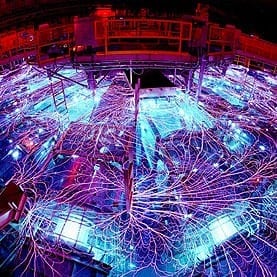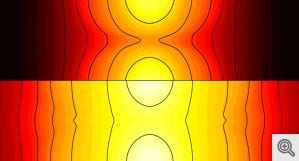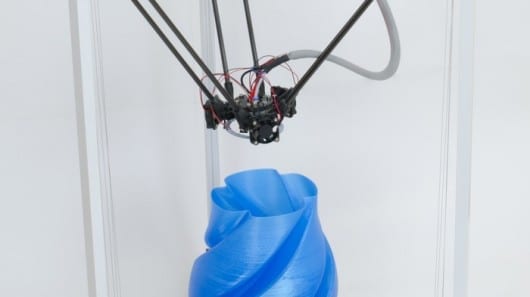
The secrets to its success are lasers, magnets and a big pinch
The Z machine at Sandia National Laboratories in New Mexico discharges the most intense pulses of electrical current on Earth. Millions of amperes can be sent towards a metallic cylinder the size of a pencil eraser, inducing a magnetic field that creates a force — called a Z pinch — that crushes the cylinder in a fraction of a second.
Since 2012, scientists have used the Z pinch to implode cylinders filled with hydrogen isotopes in the hope of achieving the extreme temperatures and pressures needed for energy-generating nuclear fusion. Despite their efforts, they have never succeeded in reaching ignition — the point at which the energy gained from fusion is greater than the energy put in.
But after tacking on two more components, physicists think they are at last on the right path. Researchers working on Sandia’s Magnetized Liner Inertial Fusion (MagLIF) experiment added a secondary magnetic field to thermally insulate the hydrogen fuel, and a laser to preheat it (see ‘Feeling the pinch’). In late November, they tested the system for the first time, using 16 million amperes of current, a 10-tesla magnetic field and 2 kilojoules of energy from a green laser.
“We were excited by the results,” says Mark Herrmann, director of the Z machine and the pulsed-power science center at Sandia. “We look at it as confirmation that it is working like we think it should.”
The experiment yielded about 1010 high-energy neutrons, a measure of the number of fusion reactions achieved. This is a record for MagLIF, although it still falls well short of ignition. Nevertheless, the test demonstrates the appeal of such pulsed-power approaches to fusion. “A substantial gain is more likely to be achieved at an early date with pulsed power,” says nuclear physicist David Hammer of Cornell University in Ithaca, New York, who co-wrote a 2013 US National Research Council assessment of approaches to fusion energy.
With its relatively slim US$5-million annual budget, MagLIF is a David next to two fusion Goliaths: the $3.5-billion National Ignition Facility (NIF) at Lawrence Livermore National Laboratory in California, and the €15-billion (US$20-billion) ITER experiment under construction in France. (Sandia has about $80 million to operate the Z machine each year, but it serves other experiments in addition to MagLIF.) The NIF squashes fuel capsules using nearly 2 megajoules of laser energy, and ITER will use 10,000 tons of superconducting magnets in a doughnut-shaped ‘tokamak’ to hold a plasma in place to coax self-sustaining fusion.
Both of the big projects have run into problems.
The Latest on: Nuclear Fusion
[google_news title=”” keyword=”Nuclear Fusion” num_posts=”10″ blurb_length=”0″ show_thumb=”left”]
via Google News
The Latest on: Nuclear Fusion
- £600 million contracts to build Nottinghamshire fusion energy plant open to biddingon May 8, 2024 at 10:05 am
Bidding to begin building the world’s first nuclear fusion energy plant in Nottinghamshire will begin within weeks.
- Breakthrough in Nuclear Fusion: Startup Achieves Sun-Core Temperatureson May 8, 2024 at 8:07 am
A nuclear fusion startup has made significant strides by generating temperatures hotter than the Sun’s core, paving a new pathway toward limitless clean energy. The company, Zap Energy, has achieved electron temperatures ranging from 11 to 37 million degrees Celsius,
via Bing News










